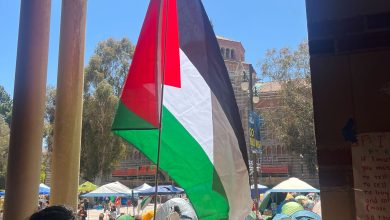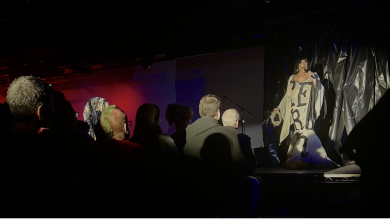Housing Justice in #Unequal Cities

Design by Shannon Boland
On Friday, Feb. 1 the Institute on Inequality and Democracy at UCLA Luskin hosted the second part of their Housing Justice in #UnequalCities Conference at the UCLA Luskin School of Public Affairs. The first part took place the night before on Thursday Jan. 31 at the Los Angeles Community Action Network. The conference’s aim was to bring together and present research that analyzes housing precarity and dispossession, and to examine practices of housing justice in the hopes of consolidating future research and inquiry in the fields of geography and urban studies.
The panels ranged in topic from rent and property to global research on housing. One notable panel called “Racial Banishment” was moderated by Ananya Roy, a Professor of Urban Planning and Social Welfare and Founding Director of the Institute on Inequality and Democracy at UCLA Luskin. Roy prefaced the panel by imploring the audience to rethink market-driven displacement and eviction as a form of racial banishment that targets communities of color.
The panel discussion began with Nik Heynen, a Professor of Geography at the University of Georgia, who spoke about his work on Sapelo Island, home of one of the most intact Gullah communities. In the 19th century, future Georgia senator Thomas Spalding bought Sapelo island and turned it into a plantation, using African slaves to work on its crops. As time marched on, the island became the home to the slaves’ descendants. However, foreign landowners with financial interests started to buy land on the island, displacing the longtime inhabitants.
Decades later, in response, one of the slaves’ descendants, Cornelia Walker Bailey, began to fight for the cultural survival of her community. After her passing, Heynen and others formed the University of Georgia’s Cornelia Walker Bailey Program on Land and Agriculture to further her work of preserving and addressing the history, present status, agriculture, and property politics of the threatened Gullah community on Sapelo island.
The following speaker was Rahim Kurwa, an Assistant Professor at University of Illinois, Chicago, who spoke on the discrimination in the historically segregated Sun Village area of Los Angeles County. Post Fair Housing Act, the area continued to maintain a racial hierarchy among the predominantly white local residents who opposed the use of vouchers. The residents cited a mix of race, gender, and “social order” grievances. As most voucher users were Black, Kurwa argued that this opposition can be classified as racial backlash.
Through interviews with tenants, it became clear that the discrimination manifested in the policing and constant surveillance of renters, particularly Black women with children. For example, if a renter was suspected of harboring an “unauthorized tenant” their home was put under constant surveillance, including the contents of their closet. One instance involved a resident named Barbara whose “male-representing” clothes were used as proof that she was harboring a man in her home. In response, her landlord began the process of her eviction, even though she insisted they were her clothes and self-identified as a lesbian. Kurwa argued for a need to re-examine housing assistance programs to fight against the policing and criminalization of tenants in order to understand not just the nature of current programs.
The final speaker, Laura Pulido, a Professor of Geography at University of Oregon, explored the idea of cultural memory and how our culture narrates the past, specifically which stories we accept as representative of our shared past. Pulido argues that our cultural memory is hegemonic, usually sanitizing, neutralizing, and justifying the violence and inequality of the past. One example she discussed was the Sand Creek Massacre site in Colorado, the only of its kind in the National Parks system to acknowledge its history as a massacre. She argued it couldn’t be the only site of a massacre, and showed the sanitization of U.S. violence against Indigenous peoples. Instead of grappling with the past to make reparations, the U.S.’s cultural memory seeks to look towards the future and claim the atrocities will never happen again. After all, she argued, it’s easier to build a country on battles than on massacres.
Most of us don’t give much conscious thought to the housing precarity of other communities we aren’t a part of. We may be aware of the injustice others experience, but we find ourselves so preoccupied with our own struggles with rent and housing that we forget how many people are displaced, especially poor communities and communities of color.
It is important to continue the research exploring the pressing issues of housing injustice and displacement. Scholars, professors, and researchers bring to light the reality of so many marginalized populations whose voices go unheard or are silenced. However, it is also important for non-academics to be aware and learn about these housing realities. One way is through following groups and people whose mission is to spread knowledge about these topics, such as the Institute on Inequality and Democracy, who will soon publish a digital volume filled with scholarship addressing the provocations and issues raised during the conference. The availability of open access hubs of knowledge are only the beginning in joining the conversation.




